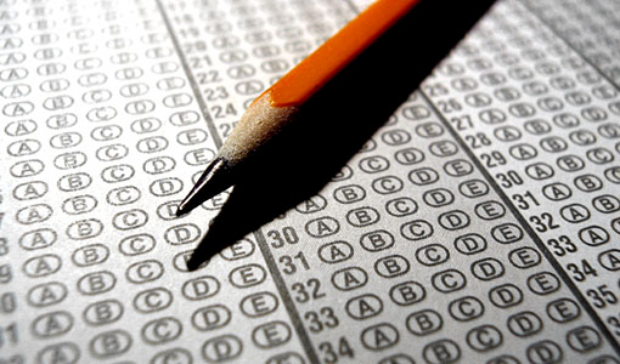With the end of the latest presidential election cycle, it’s still unclear what issueswill take center stage in the Obama administration. One issue that iscentral to the education system in our country is the future of No Child LeftBehind (or what educators refer to as “NCLB”).
No Child Left Behind legislation passed in the early days of the George W. Bushadministration, and was based on a program he had implemented as governor of Texas.
Like the wars in Iraq and Afghanistan, the bailout of the economy and many other pressing issues, meaningful policy deliberations about NCLB require a more nuanced analysis than in a five-second sound byte you might hear on the evening news.
Together, we share the administrative leadership of St. Thomas’ Department of Leadership, Policy and Administration. In these following pages we will examine the details of NCLB [1] much as we teach our students to do – within the spirit of the St. Thomas mission, with an emphasis on thinking critically and acting wisely to advance the common good.
To do this, take a step back from the specifics of the legislation itself – and the arguments of its many proponents and detractors – and instead consider the raison d’être of NCLB, both as defined by the legislation and as informed by its enactment. The stated intent of NCLB is to provide an extensive assessment tool that guarantees that all students who leave P-12 schools in the United States will be assured of having mastered a basic set of concepts, learning skills and abilities for further learning. Such systems are required due to a persistent gap between students who traditionally do well (usually of European or certain Asian cultural descent) and pretty much everybody else. Let’s start from this premise.
When thinking critically about a set of regulations and procedures implemented to affect such a significant issue, we start by considering the merit of the stated intent at face value.
Many of the modern pioneers of educational learning theory (e.g., John Dewey in the United States and Lev Vygotsky in Russia) have emphasized the need to pay close attention to one’s experience in order to get better at learning about it. In regard to organizations, theorists like W. Edwards Deming similarly have emphasized the need to pay systematic attention to how things are done in a contextually appropriate way. According to Deming, the focus should be on continuous improvement of what the system aims to do by monitoring those activities that characterize it. [2] Thus NCLB is the assessment system that finely tunes educators’ attention toward helping all students to learn so that they have a wide range of options upon graduation.
Accordingly, under NCLB all public middle-school students are tested yearly in reading and mathematics, and then again once in high school. If students don’t demonstrate progress between years (as measured by grade-level proficiency) their school is at risk of being placed on its state’s Adequate Yearly Progress (AYP) list. Remaining on this list for more than two years in a row makes a school vulnerable to ”reconstitution,” which can mean anything from being closed entirely to reopening with an entirely different curriculum and staff. By such means – basically increased assessment and accountability – the longstanding achievement gap will purportedly be remedied by 2014.
This seems fairly reasonable at first blush; however, while thinking critically about policies like NCLB, other theoretical perspectives need to be consulted. Perhaps the first of these is what Adam Smith termed the “unintended consequences” of virtually any collection of human actions.
Smith figured that when humans are doing things well it arises from a variety of incremental modifications spawned by accumulated experience of the circumstances. When they are not doing so well it is often due to a preconceived notion that has been imposed upon the activity. [3] In slightly different terms, Andrew North Whitehead noted the human penchant for errors of “misplaced concreteness,” or mistaking one’s conception of a set of interactions with the careful observation and analysis of how they actually occur in place. [4]
Taking Smith and Whitehead seriously obliges us to take another look at NCLB. Its enactment has evidenced a number of measurement-related opportunities for misplaced concreteness. As noted, NCLB’s aim is to decrease the wide divergence between students who do and don’t leave the system well-educated. It does so by mandating the disaggregation of a schools’ student scores on the mandated tests by rule-of-thumb categories as commonly used in educational funds disbursement.
Some examples of such categories are “student race,” “free and reduced lunch” and “limited English language” proficiency. But just as these labels capture – more or less – such phenomena as a student’s race and culture, socioeconomic circumstances and facility with English, they do not effectively capture other phenomena that can have at least as much to do with a child’s poor performance in school.
Consider, for example, the everyday life of a child who is effectively homeless (which is the case with a significant percentage of contemporary urban children) or a student whose family owns virtually no books.
Further, consider the case of special education’s treatment under NCLB. This arena admittedly poses a special problem for NCLB since the legislation’s intent is to standardize a test protocol. But how does one do this when the entire category of children under consideration connotes a need for specifically different modes of instruction?
Finally, there remains the issue of ascertaining how a school educates on a grade-by-grade basis by treating each cluster of children as essentially the same (i.e., the children themselves are not tracked; rather, group scores are reported by grade level). In sociology’s early years, such logic was termed “the ecological fallacy.”
Now let’s consider some data on how these issues have played out thus far under NCLB. At this point (five years into the program), roughly 40 percent of U.S. public schools missed their NCLB targets last year; a figure that is steadily growing. [5] In Minnesota, 38 percent of our schools have landed on the AYP list, up from 26 percent in 2006. [6]
Certainly, one interpretation of these data is that NCLB is accomplishing its mission; however, some seriously complicating factors make this conclusion seem premature.
Under the heading of “unintended consequences,” it bears noting that each state at the onset of NCLB implementation was obliged to define the reading and math tests it would use. Some, like Hawaii, Massachusetts, New Mexico and North Carolina, chose a rigorous approach that has resulted in their presently experiencing AYP rates of 60 to 70 percent (and in the case of North Carolina, 83 percent); [7] thus, the 40 percent national average of states’ schools on AYP is arguably as much a reflection of their widely divergent strategies for “facilitating” of NCLB as it is indicative of meaningful learning outcomes.
This conclusion mirrors at least one preliminary analysis of the effects of NCLB thus far. A number of researchers say it is becoming increasingly clear that little correlation exists between NCLB scores and other measures of learning. For instance, only a tenuous connection has been established between the various state reading and math tests and longstanding patterns on the National Assessment of Education Progress, which, until NCLB, was commonly known as “the Nation’s Report Card.” [8]This connection implies that states have used NCLB as a kind of high stakes inkblot test, a misplaced concreteness for which they are now being rewarded or punished. Sometimes their solutions seem to have included as much political strategy as educational philosophy.
We now need to examine the political aspects of both education and leadership, another theoretical angle we urge our students to incorporate into their thinking and practice. Much as the tenuous relationship that exists between NCLB testing and what might result from other possible criteria for defining “education,” political theorists like Murray Edelman – and before him Niccolo Machiavelli – have long differentiated between a political “solution” and a serious attempt to alleviate a problematic situation.
According to Edelman, political leaders specifically look for and seek to implement prefabricated policy solutions that play to their bases with only a cursory look at what the problem is really about. Whether the solution works or not is only part of the criteria for the policy rollout, and usually not the primary one. [9] Without entirely acquiescing to cynicism, two aspects of NCLB lend themselves to this variety of political analysis.
First, NCLB has been implemented without much in the way of additional funding, although its protocols require considerable outlays for coordinated distribution and reporting of scores, not to mention any efforts undertaken to assist in student remediation.
This parallels the pattern observed earlier for policies concerning special education, which still remains seriously underfunded. Except that in the case of NCLB, a thriving for-profit cottage industry has emerged to assist schools in hoisting struggling students to grade-level scores for a fee that schools are increasingly strapped to pay.
Second, NCLB applies only to public schools. On the face of it this is a noncontroversial strategy (after all, public education is a quasi-function of government), but its net effect on the image of these schools – as we have discussed above – has been extremely negative. Yet, on balance, the reasons that schools land on the AYP list explicitly concern those students for which public schools are the first (and sometimes last) resort. By this we mean students with special learning needs (broadly defined) whom other schools cannot, or choose not to educate are overwhelmingly the students whose lack of progress penalizes AYP schools. This seems dangerously close to blaming the victim.
We hope that we have provided a more substantive context for thinking about NCLB than is typically encountered in the media or political campaigns. The analysis resists easy resolutions, but captures the essence of how we try to educate our students. Leaders, whether in schools or not, cannot avoid making substantive decisions that bear potentially serious consequences for their organizations. We think they do so best when they think critically toward acting wisely to advance the common good.
About the authors
Donald R. LaMagdeleine’s first role at St. Thomas was as director of institutional research. He is chair of the Department of Leadership, Policy and Administration and his research focus is educational policy. Dave Peterson directs the administrative licensure programs for K-12 principal, superintendent, special education director and community education director. Prior to his position at St. Thomas, he was a principal for 28 years in public education in Minnesota.
______________________________________
[1] Public Law 107-110, 107th Congress, January 8, 2002.
[2] W. Edwards Deming, Out of the Crisis. (Cambridge, Massachusetts: MIT Press, 1986).
[3] Jerry Z. Muller, Adam Smith in his Time and Ours. (Princeton: Princeton University, 1993).
[4] Alfred NorthWhitehead, Adventures of Ideas, (New York: Free Press).
[5] Sam Dillon, “Under ‘No Child’ Law, Even Solid Schools Falter.”
[6] Minnesota Department of Education, “Department of Education Releases Adequate Yearly Progress (AYP) Data,” (August 30, 2007).
[8] Scott J.Cech, “Testing Expert Sees ‘Illusions of Progress’ Under NCLB,” (Education Week, October 1, 2008, p. 8).
[9] Murray Edelman, Constructing the Political Spectacle, (Chicago: University of Chicago, 1988).





